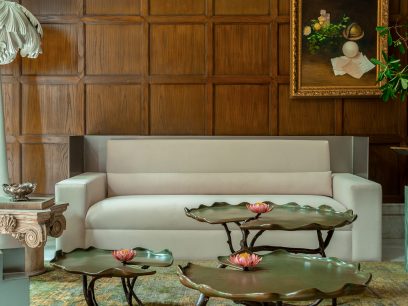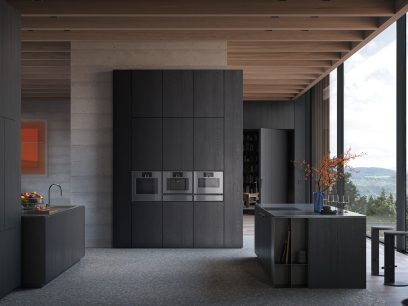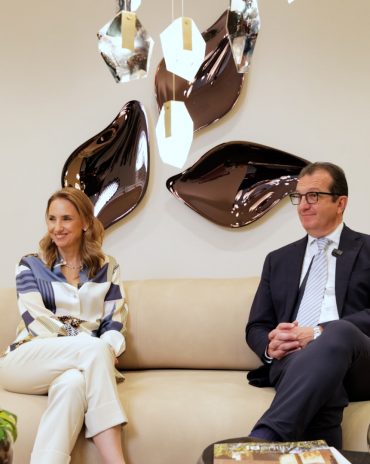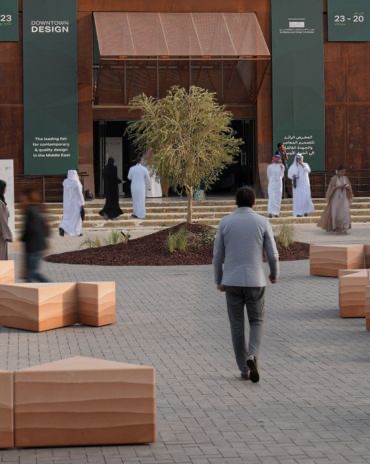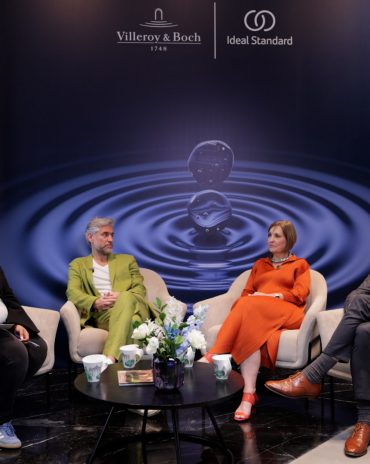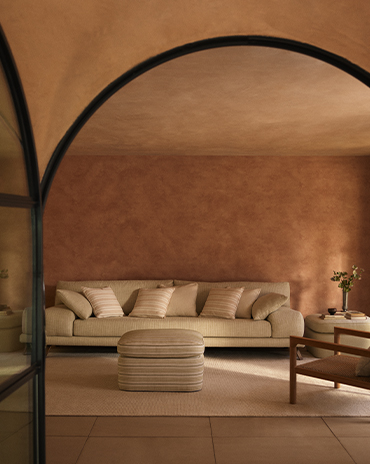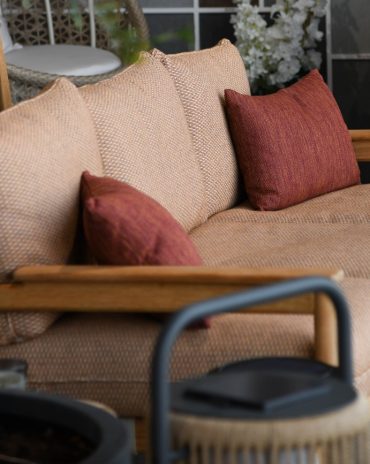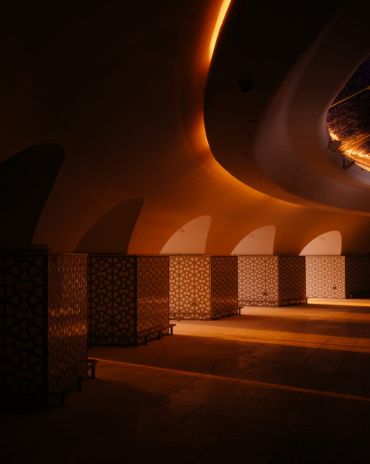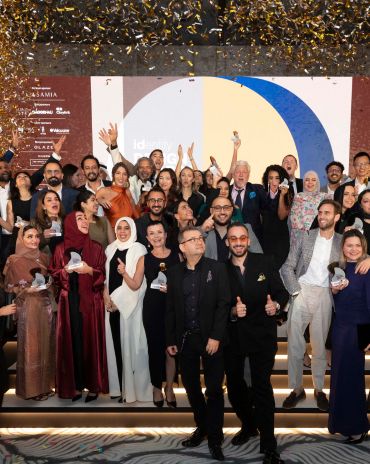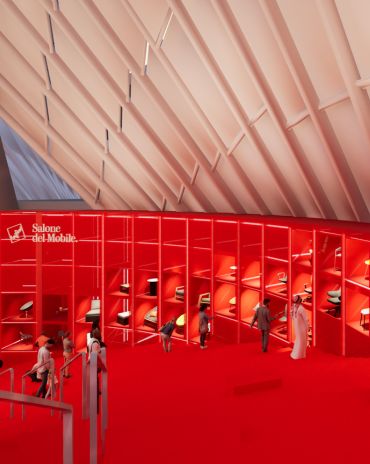Copyright © 2025 Motivate Media Group. All rights reserved.
Loewe’s exhibition for Milan Design Week puts the spotlight on the simple chair
The exhibition 'Loewe Chairs' turns a seemingly mundane objects into a collectible item
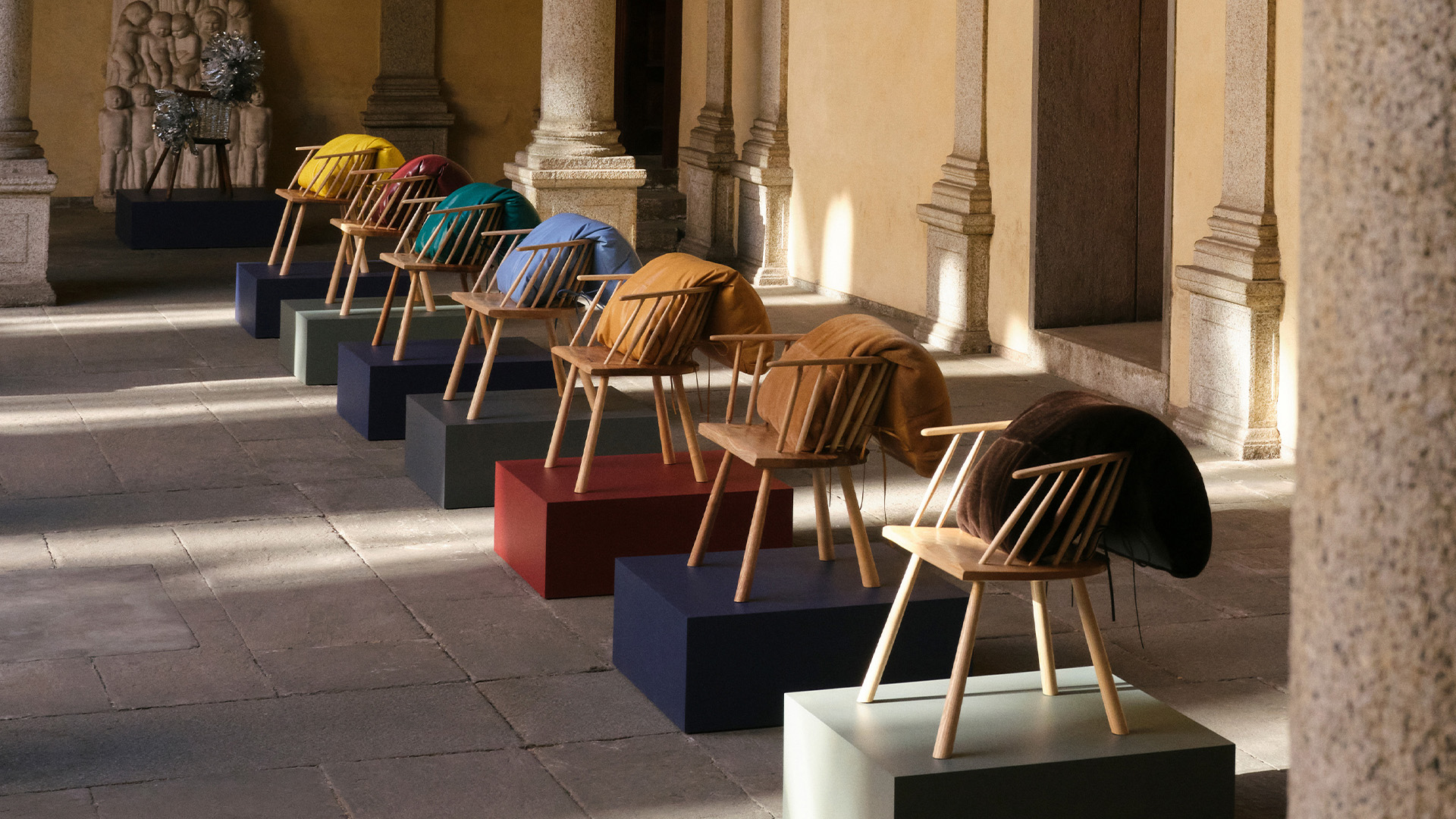
JW Anderson’s appreciation for craft is unquestionable – and has been ever more present since he was named creative director of Spanish fashion house Loewe over a decade ago, where he launched the Loewe Craft Prize in 2017, spotlighting the work of makers from diverse backgrounds and disciplines. Anderson’s grandfather was a textile designer and since visiting the factory with him in Northern Ireland, the designer became fascinated by the act of making. Anderson’s Loewe has extended far beyond fashion, and his craft-honing participation during Milan Design Week has proven that.

From exploring bamboo and various weaving techniques (including with leather, straw and paper), this year’s focus is on the wooden ‘stick chair’, a term which has been used to describe the apparent simplicity of the build and appearance of the domestic furniture item; one that has long been considered a ‘peasant item’, and not worth documenting.
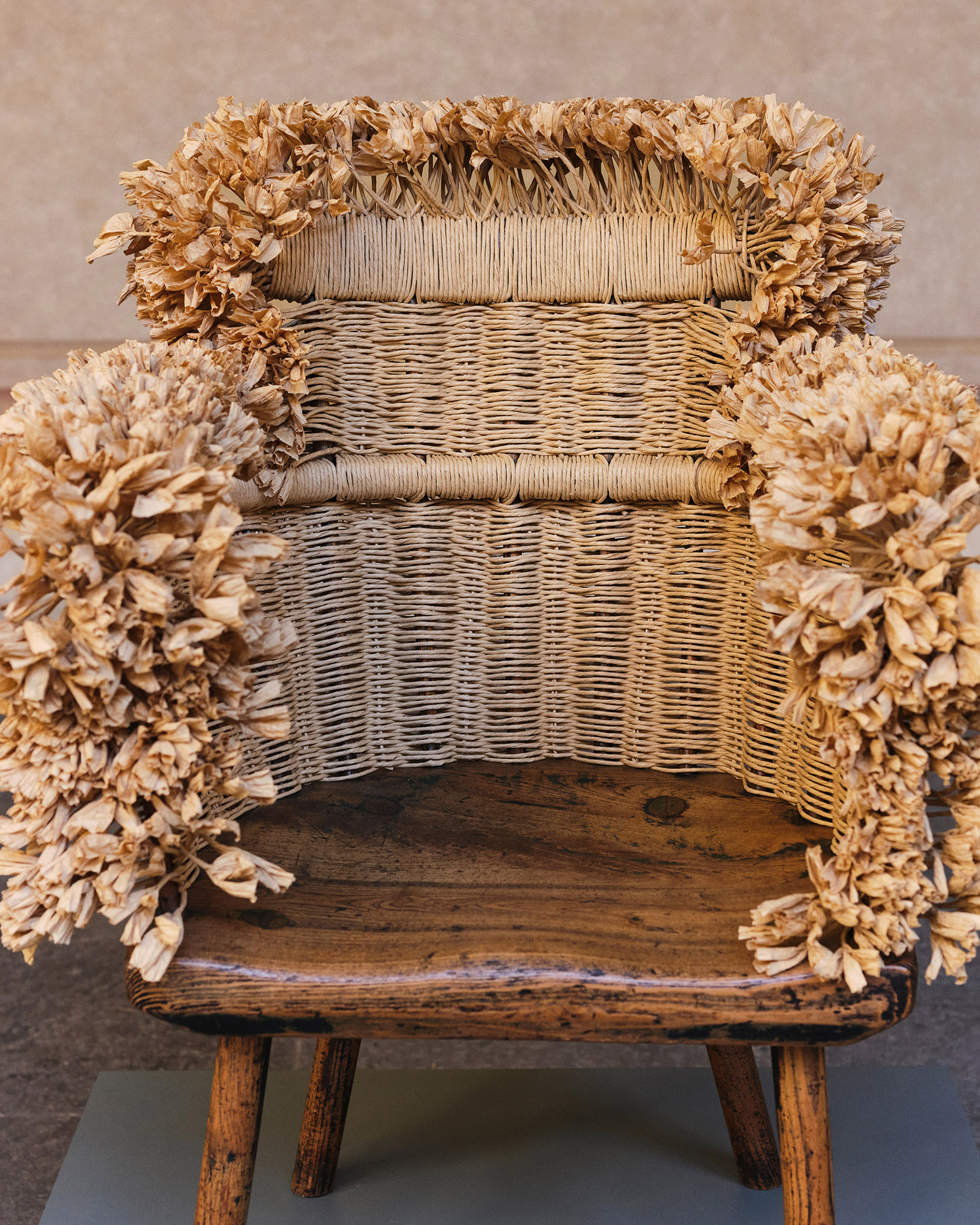
Of course, Anderson disagrees and instead has created an entire exhibition where the chair is the starting point, while highlighting the creative process of weaving and embellishment by skilled artisans from around the world that transforms a seemingly mundane piece of furniture into a collectible object. The humble stick chair thus becomes a springboard for unbridled woven decoration.
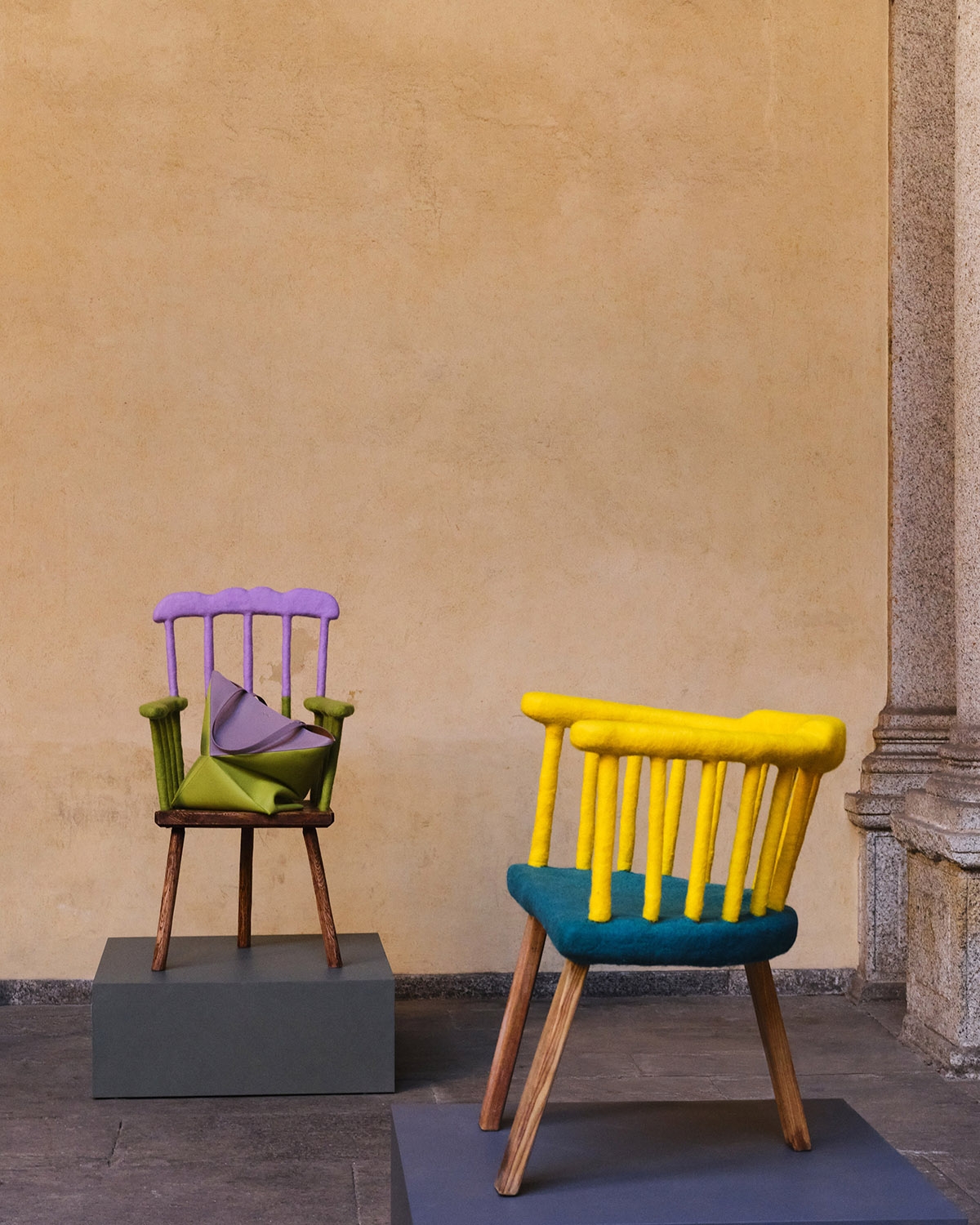
According to Loewe, the earliest records of the ‘stick chair’ can be traced back to the time of the 10th-century king Hywel Dda, and while the shapes and forms of the chairs can vary, what unites them is the method of construction, where all the uprights and legs are fixed into the seat and are typically held in place with a wedge.

In total, thirty stick chairs have been embellished: twenty-two of these are original antiques, while the remainder have been newly crafted by a British atelier that specialises in this style of chairs. The other eight ‘Lloyd Loom’ chairs – honouring the technique of creating a durable woven texture of the same name – were created by Belgian company Vincent Sheppard.

The myriad chairs featured in the exhibition spotlight various weaving techniques and an even wider assortment of materials; some of which, like leather and raffia, are familiar to the brand’s DNA, while others, such as the foil of thermal blankets, are unexpected additions. Additional materials include shearling and felt, giving the chairs a soft and tactile texture. The powerful use of colour is also surprising, emphasising the medley of colours and artistic interventions. In the end, each item becomes a creative dialogue between the artisans and their preferred medium and object.
The Latest
In conversation with Karine Obegi and Mauro Nastri
We caught up with Karine Obegi, CEO of OBEGI Home and Mauro Nastri, Global Export Manager of Italian brand Porada, at their collaborative stand in Downtown Design.
An interview with Huda Lighting at Downtown Design
During Downtown Design, we interviewed the team at Huda Lighting in addition to designers Tom Dixon and Lee Broom.
Downtown Design Returns to Riyadh in 2026
The fair will run its second edition at JAX District
Design Dialogues with KOHLER
We discussed the concept of 'Sustainable Futures' with Inge Moore of Muza Lab and Rakan Jandali at KCA International.
Design Dialogues with Ideal Standard x Villeroy & Boch
During Dubai Design Week 2025, identity held a panel at the Ideal Standard x Villeroy & Boch showroom in City Walk, on shaping experiences for hospitality.
A Touch of Luxury
Here’s how you can bring both sophistication and style to every room
Outdoor Living, Redefined
Messara Living and Vincent Sheppard Unveil “Outdoor at Its Best 2026”
NOMAD Opens Its Doors in Abu Dhabi’s Iconic Terminal 1
A modernist landmark is reimagined as a global stage for collectible design, contemporary art, and cultural dialogue.
In photos: Winners at the identity Design Awards 2025
Presenting the winners of 2025 identity Design Awards.
Identity Design Awards 2025 – Winner’s List
Here are the winners of the identity design awards 2025
Hogg’s Hollow
Set along the bend of a quiet river and sheltered within a mature, tree-lined enclave of Toronto, this riverside residence offers a dialogue between structure and softness, restraint and warmth
Salone del Mobile.Milano Paints Riyadh Red
The “Red in Progress” installation marks a powerful first step toward the city’s full-scale 2026 edition


